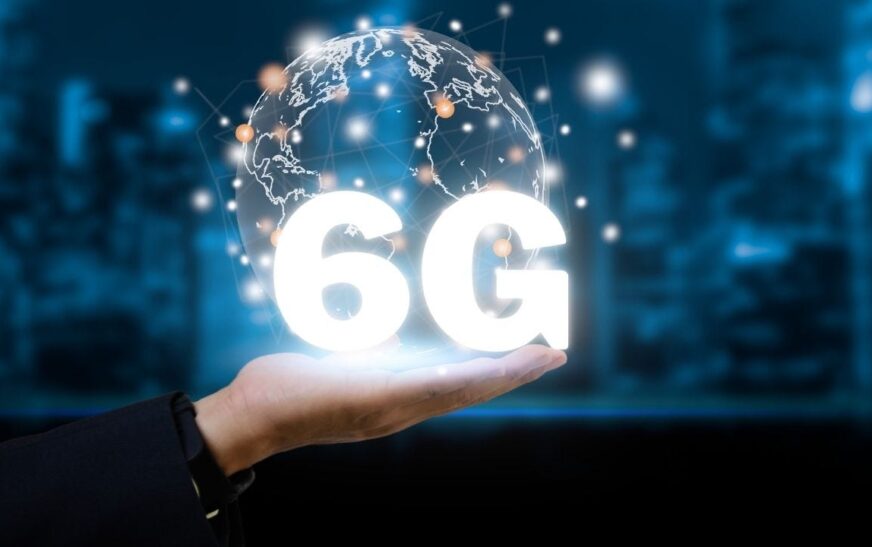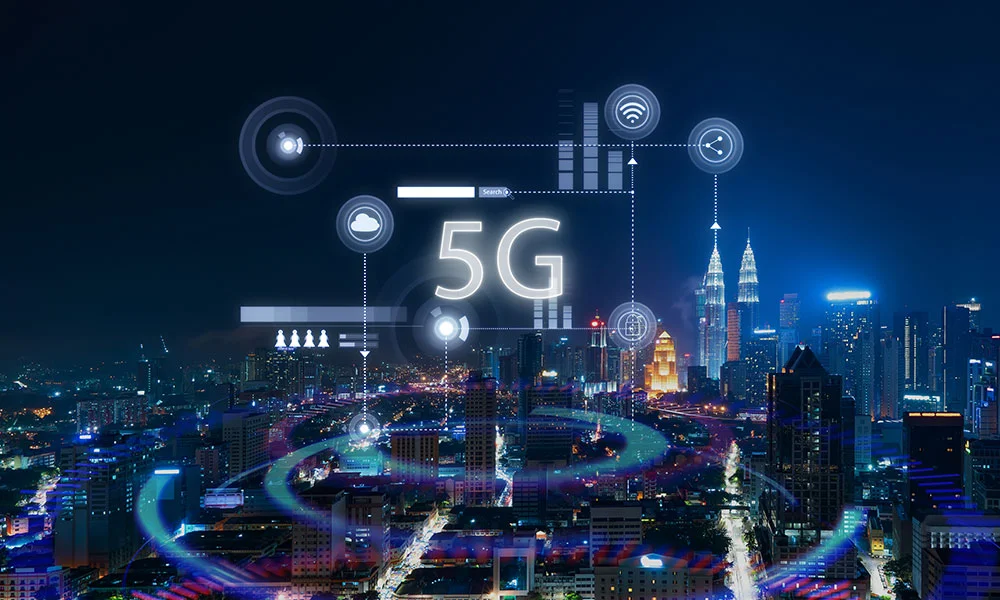Introduction to 6G Networks
The world of wireless technology is on the brink of a groundbreaking transformation. As we stand at the threshold of a new era, 6G networks promise to redefine our connectivity experience like never before.
While 5G has already revolutionized how we communicate and interact with devices, its successor is gearing up to elevate that experience even further. Imagine higher speeds that make buffering a thing of the past, and reduced latency so minimal it feels instantaneous.
The potential applications are vast—encompassing everything from smart cities to autonomous vehicles and beyond. Let’s dive into what makes 6G networks not just an evolution but a revolution in wireless communication.

What makes 6G different from previous generations?
6G networks represent a significant leap forward in wireless technology. Unlike its predecessors, 6G aims to provide ultra-high speeds that can reach up to 1 terabit per second. This is several times faster than what we experience with current 5G networks.
Another key difference lies in latency. While 5G already reduced latency significantly, 6G promises an astonishing reduction to under one millisecond. This improvement opens doors for applications requiring real-time data processing.
Moreover, the capacity of 6G networks will be far greater, enabling connectivity for billions of devices simultaneously. The focus shifts from mobile broadband access to a more integrated approach involving advanced technologies like AI and machine learning.
These advancements will not only enhance user experiences but also pave the way for innovations across various sectors such as healthcare, transportation, and smart cities.

Advantages of 6G Networks
One of the standout features of 6G networks is their ability to deliver higher speeds. This leap forward means downloading entire movies in seconds, transforming how we consume media and share content.
Another significant advantage is reduced latency. With response times measured in milliseconds, applications like virtual reality and remote surgery can operate seamlessly. Users will experience near-instantaneous connectivity.
Additionally, 6G technology promises enhanced network reliability. By incorporating advanced algorithms and AI-driven management tools, these networks will ensure a more stable connection even during peak usage hours.
The potential for massive device connectivity also shines through with 6G. Smart cities could flourish as billions of devices communicate effortlessly, paving the way for innovations in transportation and infrastructure.
Energy efficiency becomes paramount with this new generation. Optimized power consumption means longer-lasting devices and lower operational costs for service providers while promoting sustainability goals globally.

Possible applications and impact of 6G technology
6G technology is set to revolutionize various sectors by enabling unprecedented connectivity. Imagine smart cities where everything from traffic lights to waste management systems communicates seamlessly.
Healthcare will benefit tremendously as remote surgeries become a reality, thanks to higher speeds and reduced latency. Doctors can perform complex procedures on patients located miles away with minimal delay.
In the entertainment industry, immersive experiences like holographic concerts or virtual travel could redefine how we engage with media. The possibilities are endless when devices can communicate at lightning speed.
Moreover, 6G will enhance IoT applications, connecting billions of devices effortlessly. This integration promises smarter homes and more efficient businesses.
Education may also transform; classrooms could host global learners in real-time through advanced virtual environments that feel almost tangible. With such diverse applications, 6G stands poised to impact our lives significantly in ways we have yet to fully imagine.

Challenges and limitations of implementing 6G
Implementing 6G networks comes with its fair share of challenges. One major hurdle is the need for substantial infrastructure upgrades. Existing towers and equipment may not be compatible with new technologies.
Spectrum allocation presents another complication. Governments must manage frequency bands efficiently, which could lead to regulatory delays that slow down deployment.
Security concerns also loom large. As data transmission speeds increase, so does the potential for cyberattacks. Addressing these vulnerabilities will require ongoing investment in advanced security measures.
Moreover, achieving global coverage poses logistical issues. Many regions still lack reliable access to current wireless technologies; bridging this gap before introducing 6G could prove daunting.
Public acceptance and understanding of 6G technology are critical yet often overlooked factors. Educating consumers about its benefits is essential for widespread adoption and utilization.

Timeline for the development and deployment of 6G
The timeline for 6G development is already underway. Researchers and companies are working diligently to establish the foundational technologies necessary for this next-generation wireless system.
Initial discussions about 6G began as early as 2020, with visions of what it could achieve. The first prototypes are expected to emerge around 2025. This phase will focus on refining technology and testing various applications.
By the time we hit the late 2020s, commercial deployment should start taking shape in select regions. Nations worldwide will compete to roll out robust networks that can support advanced features like holographic communication and smart city integrations.
Expect gradual adoption into the early 2030s, where widespread implementation aims to bridge gaps between urban and rural connectivity. Each step taken during this period will pave the way for a truly interconnected future driven by unparalleled speeds and reduced latency across multiple platforms.

Conclusion: The future potential of 6G networks and their role in shaping our world
The future of 6G networks promises to be transformative. As technology advances, we move toward a world where connectivity is seamless and instantaneous.
Imagine ultra-reliable communications that make remote surgeries or autonomous vehicles routine. Higher speeds will enable innovations we can only dream of today.
Smart cities could come to life, with devices communicating effortlessly in real-time. This creates an environment where efficiency flourishes.
Moreover, the potential for immersive experiences like virtual reality will redefine entertainment and education. Learning could happen anywhere, anytime—opening doors to unprecedented opportunities.
Yet, as we embrace this evolution, careful consideration of ethical implications and equitable access becomes crucial. The journey ahead requires collaboration among governments, tech giants, and society at large.
In this exciting era of wireless technology lies the key to unlocking new dimensions in both personal lives and industry advancements. The impact will reverberate through generations to come.
Introduction to 6G Networks
The introduction of 6G networks marks an exciting leap in wireless technology. As we transition from the well-established 5G, anticipation builds around what this next generation will bring.
At its core, 6G promises to deliver not just higher speeds but also reduced latency that can revolutionize user experiences across various sectors. Imagine seamless connectivity that allows for instantaneous data transfer and communication.
Developers and researchers are exploring advanced technologies such as artificial intelligence and machine learning to enhance network performance. These innovations could redefine how devices interact with each other and with us.
With the potential to support a vast array of applications—from smart cities to immersive virtual reality—6G is set to impact daily life profoundly. The groundwork for this transformation is already being laid, paving the way for a more connected future.

The Evolution of Wireless Technology
Wireless technology has come a long way since its inception. The first generation, 1G, introduced analog voice communication. It laid the groundwork for mobile connectivity.
With 2G, digital signals emerged. This shift enabled text messaging and basic data services. Suddenly, phones offered more than just calls.
3G brought higher speeds and multimedia capabilities into play. Users could stream music and browse the web with relative ease. The connection experience transformed dramatically.
Then came 4G, heralding an era of fast internet access on mobile devices. Video streaming became commonplace as apps proliferated across platforms.
Now we stand at the brink of 5G and eyeing 6G networks on the horizon. These advancements promise even higher speeds and reduced latency that will redefine how we connect to each other and our world around us.
The evolution continues, shaping not only technology but also society itself in ways we are just beginning to understand.

What makes 6G different from previous generations?
6G networks promise to revolutionize wireless technology, setting themselves apart from previous generations in several key ways.
First, they aim to achieve unprecedented higher speeds that will surpass the capabilities of 5G. Imagine downloading an entire movie in seconds!
Another distinct feature is reduced latency. While 5G already offers impressive performance, 6G intends to push this even further, enhancing real-time communication.
Moreover, the integration of advanced technologies like artificial intelligence and machine learning into network management marks a significant shift. This allows for smarter data processing and resource allocation.
Finally, 6G networks are designed with enhanced connectivity options in mind. They will cater not just to mobile devices but also support massive deployments of IoT devices seamlessly. The future looks promising as these advancements unfold!

Advantages of 6G Networks
6G networks promise to revolutionize connectivity with significantly higher speeds and reduced latency. This leap forward enables seamless communication, making real-time applications more efficient than ever.
Imagine downloading a full-length movie in seconds instead of minutes. That’s the potential of 6G technology when it comes to speed. It can transform how we consume media and interact with content on our devices.
Another advantage is enhanced capacity. With advanced spectrum usage, 6G networks can support an exponential increase in connected devices simultaneously. This capability is vital for smart cities and IoT integration.
Moreover, 6G promotes ultra-reliable low-latency communications (URLLC). Industries like healthcare will benefit immensely from this feature, allowing remote surgeries and telemedicine consultations that require immediate feedback.
The energy efficiency of these networks also stands out. Improved power management techniques lead to lower consumption rates, contributing positively towards sustainability goals while ensuring high-performance connectivity across various sectors.

Potential Applications of 6G Technology
The arrival of 6G Networks promises to unlock a plethora of groundbreaking applications. Imagine ultra-reliable remote surgery, where doctors can operate on patients thousands of miles away with virtually no delay. This is not science fiction; it’s within reach.
Smart cities will thrive under the influence of 6G technology. With higher speeds and reduced latency, everything from traffic management systems to public safety initiatives will function seamlessly. Real-time data sharing among connected devices could transform urban living.
Moreover, industries like agriculture stand to benefit immensely. Autonomous drones equipped with real-time analytics can monitor crops efficiently, optimizing yields while minimizing waste.
Entertainment also gets a facelift with immersive experiences in virtual and augmented reality that feel truly lifelike and interactive. Through these avenues, 6G has the potential to redefine how we interact with both our environments and each other at an unprecedented level.

Challenges and Limitations of 6G Networks
The rise of 6G networks brings excitement, but it also faces significant challenges. One major hurdle is the need for new infrastructure. Upgrading existing systems to accommodate higher speeds and reduced latency demands substantial investment.
Spectrum allocation presents another issue. The radio frequency spectrum is limited and fiercely competitive among various technologies. Identifying suitable bands for 6G requires careful planning and coordination.
There’s also the complexity of integrating with previous generations. Ensuring seamless connectivity between 5G and upcoming 6G networks adds layers of difficulty in both deployment and user experience.
Security concerns cannot be overlooked either. As technology evolves, so do cyber threats. Developing robust security measures that can safeguard data privacy will remain a pressing concern as we transition into this new era of wireless technology.
Regulatory frameworks are still catching up with advancements in telecommunications, creating potential roadblocks that could slow down progress toward widespread implementation.

Future Outlook for 6G Technology
The future of 6G networks promises a transformative shift in wireless technology. As we look ahead, the potential for higher speeds and reduced latency is extraordinary. Imagine seamless connectivity that enables real-time communication across diverse devices.
Technological advancements will not only enhance mobile broadband but also facilitate innovations like augmented reality and smart cities. The integration of AI with 6G could lead to smarter network management and an overall enhanced user experience.
Global collaboration will play a crucial role in shaping this next generation of networks. Countries are already investing heavily in research to develop robust infrastructure necessary for widespread adoption.
As we inch closer to deployment, industries worldwide need to prepare for the changes that 6G will bring. This new era isn’t just about faster internet; it’s about redefining how we interact with our environment and each other through advanced connectivity solutions.

Conclusion
The future of 6G networks promises to be transformative. As we stand on the brink of a new generation in wireless technology, the potential for higher speeds and reduced latency is unparalleled. This next-generation network architecture will enable innovations that can reshape industries, enhance connectivity, and improve our daily lives.
With its advanced capabilities, 6G holds the key to enabling seamless communication across various devices. Imagine smart cities functioning more efficiently or telemedicine becoming a norm rather than an exception. The applications seem boundless.
However, it’s essential to remain aware of the challenges ahead. Navigating through technical hurdles and addressing regulatory concerns will require collaboration among stakeholders worldwide.
As research progresses toward deployment timelines, one thing remains clear: 6G networks are set to redefine how we connect with each other and interact with technology—ushering in an era full of possibilities that could change our world for the better.






